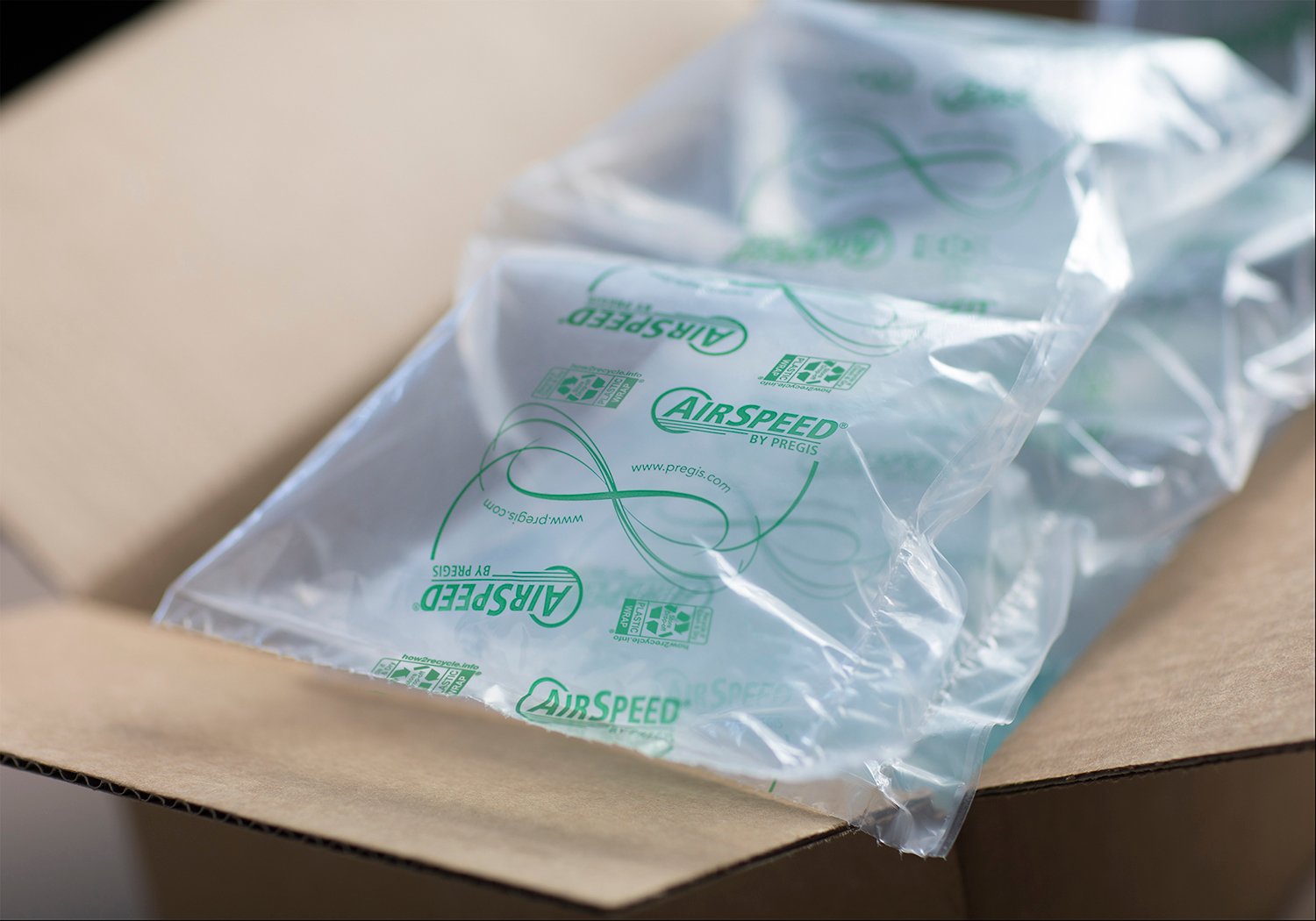Market outlook: Growth in flexible plastic packaging remains strong
Flexible packaging lives up to its name, and that’s why it’s also increasingly being used by companies to protect products in transit and extend shelf life.
Look in your kitchen pantry or bathroom cabinet and you’ll probably see dozens of examples of flexible packaging. From tomato paste to toothpaste, from apple juice to applesauce and from soup to soap, flexible packaging lives up to its name, and that’s why it’s also increasingly being used by companies to protect products in transit and extend shelf life. In fact, the global flexible packaging market is expected to grow at a rate of 3 percent from 2018-2024.
For manufacturers and shippers, the shift toward flexible packaging has many potential benefits. It requires fewer raw materials than rigid packaging products such as plastic bottles and corrugated boxes, so it is often less expensive to produce. Since it’s lighter in weight and thinner than standard packaging, it usually takes up less room in trucks, creating freight savings and warehousing space. Plus, flexible packaging can be a winning marketing tool, with vibrant colors, bold letter printing and intricate designs. Now, there are even more reasons to embrace flexible packaging materials: efficiency and sustainability.
Saving Time and Money
Flexible packaging lends itself to automated solutions that can greatly increase throughput and profitability for manufacturers and shippers. Pregis offers a full suite of options, including Sharp Packaging automated poly-bagging machines, AirSpeed inflatable void-fill systems and cushioning solutions.
Sharp Packaging poly bagging machines seal items at rates that manual packing simply can’t match. AirSpeed inflatable void-fill systems can quickly produce perfectly sized plastic air pillows to prevent products from moving within the box. And the AirSpeed inflatable cushioning system quickly inflates hybrid cushioning film to create bubble cushioning to envelop products and protect against impact, vibration and compression.
Pregis’ flexible packaging materials come in a wide variety of colors and specialty designs, and many can be customized to feature a company’s logo, color scheme and marketing messaging.
Squeezable and Sustainable
Newly environmentally conscious consumers are demanding a cultural and economic shift from “take-make-dispose” packaging toward a circular economy. Described by the Ellen MacArthur Foundation as “a framework for an economy that is restorative and regenerative,” a circular economy aims to design out plastic waste, keep materials in use and regenerate natural systems.
As a sustainable, lower-cost, high-throughput packaging option, restorative, regenerative flexible plastic materials have gained strength in their widespread usage and applicability.
Lightweight, versatile and durable plastics can help save key resources such as energy and water in strategic sectors that include packaging. But until recently, many of these materials ended up in landfills because they typically aren’t accepted in curbside recycling programs and can be hard to sort from rigid materials at recycling centers.
Today, a wider array of flexible plastic packaging materials is being recycled due in part to the How2Recycle® program, established by the Sustainable Packaging Coalition. The How2Recycle® program provides labels to be printed directly onto plastic packaging materials to give consumers specific recycling instructions. Additionally, the How2Recycle® website allows visitors to input their zip code and locate the nearest supermarket or retail store where flexible materials can be dropped off.
To help its customers promote and encourage recycling, many protective packaging materials produced by Pregis come pre-printed with an easy-to-understand How2Recycle® label.
Ending Plastic Waste
As a sustainable, lower-cost, high-throughput packaging option, restorative, regenerative flexible plastic materials have gained strength in their widespread usage and applicability. They’re also helping Pregis fulfill the zero-waste promise of the Alliance to End Plastic Waste.
“Our vision at Pregis not only underscores a commitment to protective packaging, but also to a higher purpose which is rooted in sustainability and supporting communities across the globe,” says Kevin Baudhuin, president and CEO of Pregis.
Empowering consumers with the tools to protect against waste – in any form – and the education to responsibly recycle plastics is a small, yet meaningful step forward in the journey to end plastic waste. “Joining the Alliance to End Plastic Waste provides us with a unique opportunity to collaborate with passionate, like-minded thought leaders eager to create positive change for the planet. This platform will allow us to be an integral part of solving a complex challenge.”
To learn more about Pregis flexible packaging solutions, visit here. For more info on Pregis’ commitment to a better planet, click here.

